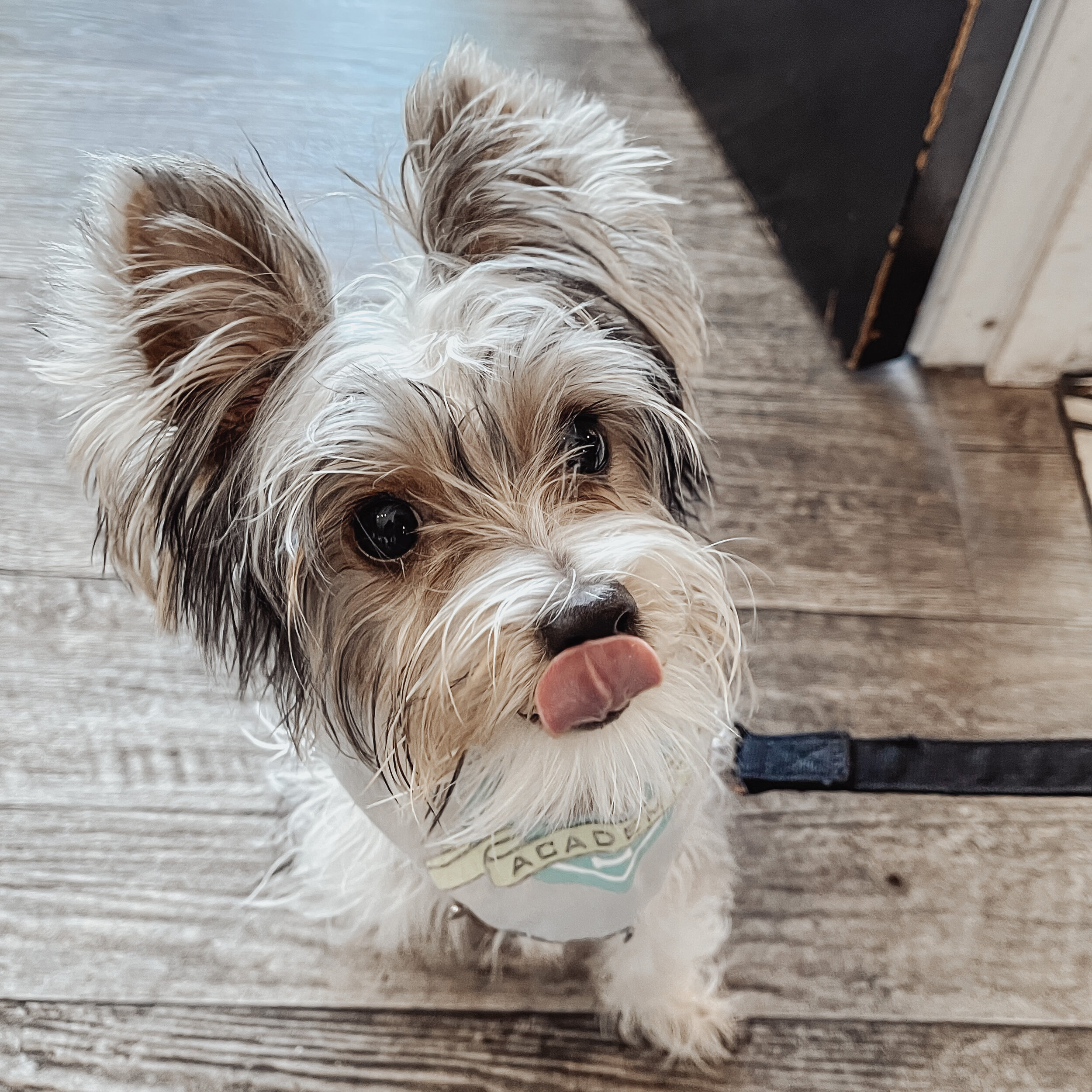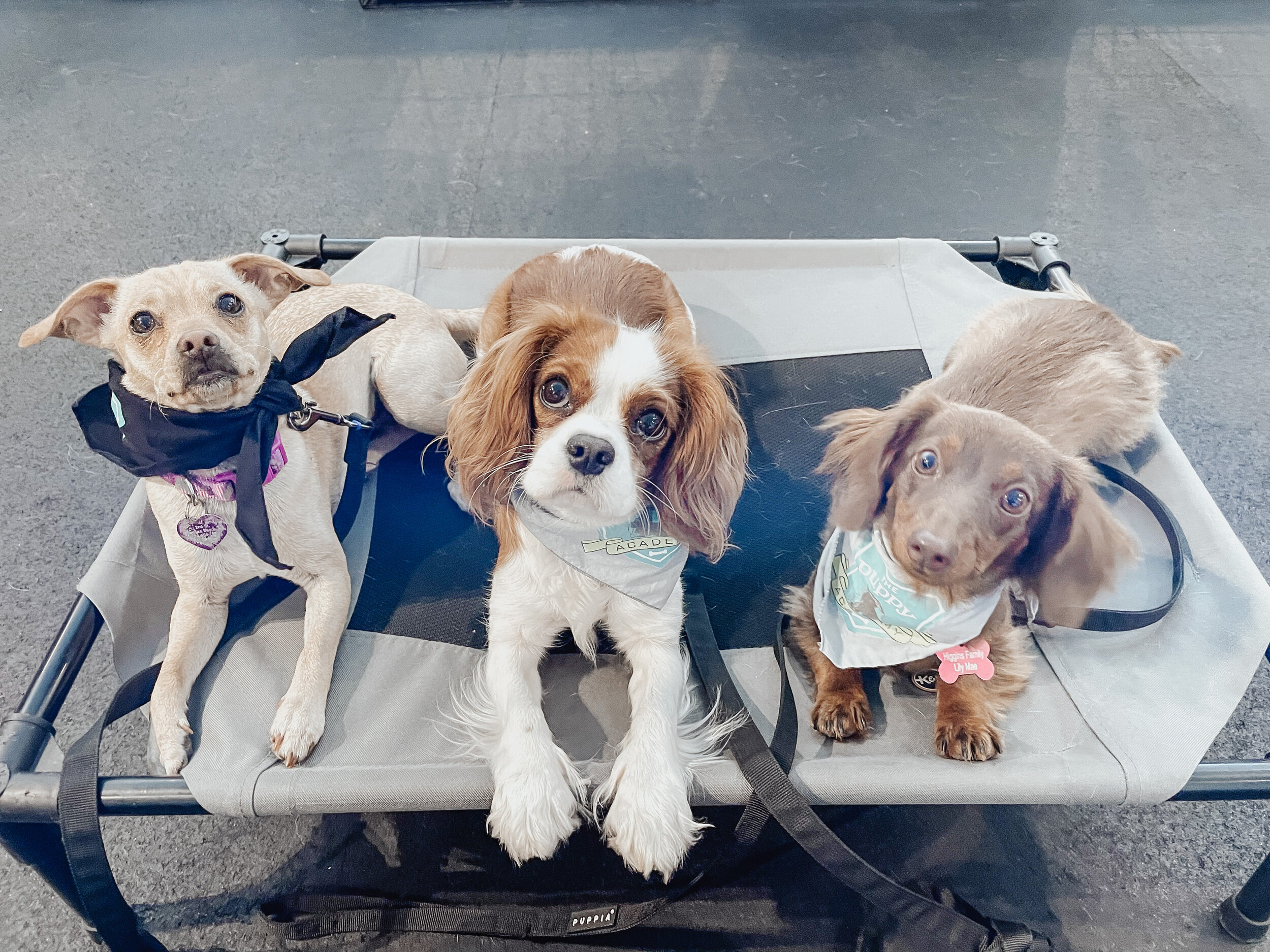Crate or playpen or both? Do you even need them? Here are the reasons why to use these helpful tools for your puppy’s growth and training!
The Puppy Academy student, Cooper
Are you a new puppy owner ready to bring your new puppy to their new home? Congratulations! Puppy parenthood is such a rewarding experience so we want to help you get off with the best paw forward! So first up on your puppy parent journey is setting up your home properly for your puppy, starting with your puppy’s sleeping area!
Crates and playpens offer your puppy safe and comfortable places within your home to rest, play, and eat while your puppy is growing up and learning their routine at home.
If you were planning on having your puppy free-roam and sleep in bed with you, take a few moments to read through why opting for a crate and playpen are beneficial for your puppy’s development and future training!
Debunking the myth of free-roaming and super-sized crates!
It’s understandable that as a new puppy owner, you want to give your puppy the best experience at home and make them feel comfortable! But before you let your puppy free-roam or go out and buy a super-sized crate because you want them to have “space” here are a few things to consider:
1. Your puppy prefers smaller spaces!
It’s true! Dogs are naturally denning animals that seek the comfort and security of being surrounded by their pack and usually sleep in tighter spaces. Your puppy is less likely to be able to settle down and even show anxious pacing in a larger crate. Small, however, doesn’t mean you should pick a crate that your puppy can barely fit into. Your puppy should be able to stand, do a complete circle, and lay down without pressing against the sides or top of their crate. For more information on how to pick a crate for your puppy, check out this blog on crate training!
2. Your puppy still isn’t potty trained!
By letting your puppy roam or getting them a larger-sized crate, you are welcoming the chance for your puppy to have accidents around your home or inside of their crate. This can create a bad and difficult habit that needs to be addressed right away. Puppies and dogs, in general, do not like to soil in the area where they sleep so getting them an appropriately sized crate helps to eliminate your puppy that space as an option to go potty!
Pro tip: If you buy a metal wire crate, opt for a crate that comes with a divider. This option allows your puppy to grow into their crate but allows you to block them off from the extra space. You can use blankets to cover your puppy’s crate and the extra space to make their crate feel extra cozy and secure!
How to set up your puppy’s crate!
The Puppy Academy, Bandit
If you have just brought home your new puppy and filled up their crate with a fluffy bed, lots of plush toys, a water bowl, and everything else you can think of, just pause for one second! All of these things are great, but not necessary and your puppy still hasn’t settled into their routine of sleeping in a crate! And by adding in a bed and other cloth toys, you're also creating an opportunity for your puppy to potty on and destroy these things! Here’s what you should do instead:
1. Eliminate the clutter!
As we mentioned before, these items are great but not necessary right now. Remove them and instead let your puppy settle into their crate and start getting into the routine of sleeping in the crate.
2. Opt for quiet and private spaces!
Place your puppy’s crate in a place or room in your home that is quiet, cozy, and out of the main household traffic where your puppy can go and truly relax alone. Think of it as a baby nursery!
3. Create a dark, calm, and cozy atmosphere!
If your puppy is anxiously watching you and the rest of the family from their crate, or even whining a bit to be let out, try to use a blanket or towel over the top and sides of your puppy’s crate to block out distractions and light, while leaving the back of your puppy’s crate exposed for airflow, Wherever you decide to place your puppy’s crate, try to create a dark, calm, and cozy atmosphere by dimming the lights, and even playing some light music or white noise. All of these techniques will help your new puppy start to settle and fall asleep on their own in the crate.
Pro tip: If your puppy is whining (and you know they just went potty), don’t rush to let them out but instead, give them a few minutes to let them whine it out! It might seem hard (and it’ll probably be harder for you than your puppy) but eventually, your puppy will learn to settle down in their crate on their own, it might just take a few nights to get there!
Set up your puppy’s playpen!
The Puppy Academy students, Kona, Bella & Lily Mae
While your puppy’s crate is the ideal location for them to take a break during the day or go to sleep at night, your puppy’s playpen provides a safe and controlled environment when you aren’t able to walk, play, or train your puppy and they can go play, eat, drink, and even take a nap in their playpen, too! Puppies that aren’t potty trained and allowed to free-roam at home can spell accidents waiting to happen if you can’t supervise them. Playpens give the peace of mind that your puppy is less likely to soil your carpets but also not get into something that they shouldn’t.
1. Playpen essentials!
In the beginning, just like your puppy’s crate, remove clutter such as a bed, blankets, and excess toys that your puppy may chew up. You can provide your puppy with safe chew toys to help keep them engaged in play and busy while you do things around your home. When it comes to sizing the playpen, give your puppy enough room to play, stretch out and rest.
Pro tip: Kong toys are great to give your puppy to chew and lick! Chewing and licking actually helps your puppy relax and self-soothe if they feel anxious being alone. The great thing about toys like Kongs is that you can stuff them with yummy, healthy treats or peanut butter, but also they are made of tough rubber that can withstand heavy chewing without breaking apart!
2. Potty Pads!
While potty pads can slow down the potty training process, they are a good tool, just in case you aren’t able to take your puppy out to relieve themselves for some period of time. Place the potty pads in a section of your puppy’s playpen so they can go to it instead of covering the entire area of the playpen. This will encourage your puppy to go potty in a designated area. But, if your puppy is on the younger side (under 12 weeks) and not great at targeting the pads yet, and you have to leave them alone for a couple of hours, it's okay to cover the entire playpen area with pads to avoid accidents from getting onto your floors! Then you can start taking some potty pads away as your pup grows and gets better. We do, however, recommend that you stick to your puppy’s schedule and maintain taking your puppy outside to go potty throughout the day as much as possible!
If you need to leave your puppy alone for a longer period of time (we recommend no longer than three to four hours for very young puppies) you may consider setting up your puppy’s crate within the playpen. By doing so, you are providing your puppy with their designated sleeping space, and since your puppy is still potty training, a designated potty area, too! You can also leave your puppy with enough water for the time you’ll be away but try to keep it to a minimum to avoid excess potty accidents.
Pro tip: One thing to note, before you leave your puppy alone with potty pads, take a little time to observe whether or not they begin to chew and destroy the pads. If your puppy does do this, you’ll want to remove the potty pads altogether as this can become a choking risk! Instead, try an alternative rubber mat to help protect your floors or carpets!
You’re ready to welcome your puppy home with comfy and secure sleeping and play arrangements to help them feel right at home! Our goal is to make puppyhood easy for all new puppy owners at whatever stage their puppy is in! Whether it comes to welcoming home a new puppy, helping with puppy training, teaching you basic puppy care and health tips, understanding puppy behavior, and how to manage them, we have a blog full of helpful resources! Plus, check out our Instagram for live q&as with our puppy trainers who are ready to answer your questions!



